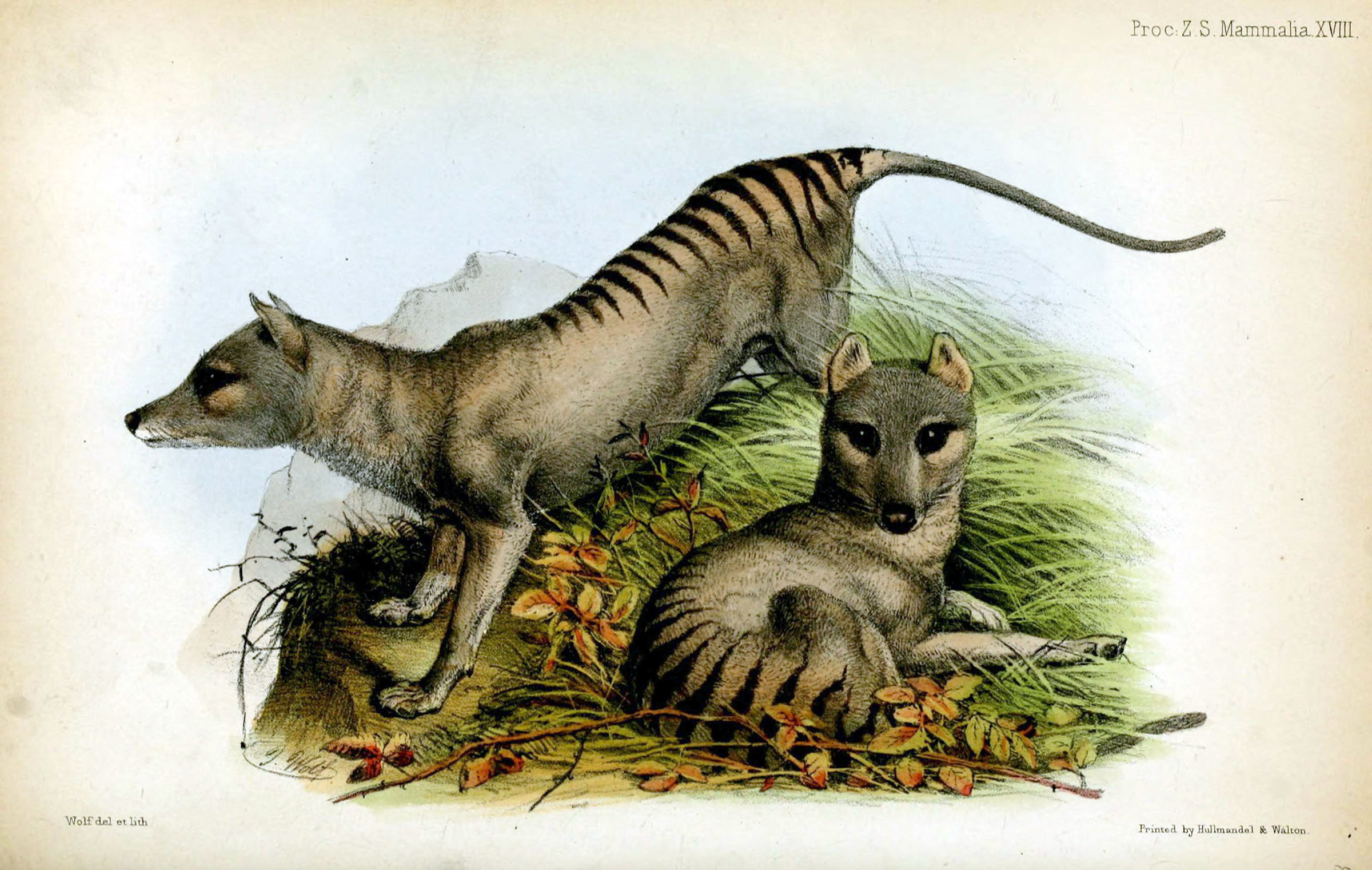The Tasmanian tiger once roamed the Australian mainland, Tasmania, and New Guinea. It first appeared around 4 million years ago and was one of the largest living carnivorous marsupials until its extinction. An extinction that was ultimately driven by humankind’s aggression. Now, a genetics company is trying to revive the Tasmania tiger and give it a second chance at life.
Colossal Biosciences wants to revive the Tasmanian tiger

The Tasmanian tiger roamed its native environment until around 2,000 years ago. That’s when hunting by humans and competition with other animals caused it to almost disappear.
Now, this carnivorous marsupial lives only in museums. But just because the species has gone extinct, doesn’t mean it has to stay extinct. At least, that’s the idea behind Colossal Bioscience’s latest endeavors.
Colossal says it wants to revive the Tasmanian tiger to compensate for the damage that overhunting of the species has caused. And, like its attempts to revive the Wooly Mammoth, it hopes to give the species a new lease on life. The company has taken a heavy focus on what it calls de-extinction—the act of bringing an extinct species back to life.
The species, scientifically named Thylacine, mostly called the Australian island of Tasmania home before its extinction 2,000 years ago. Thus, giving it the name of Tasmanian tiger or wolf, depending on where you’re from.
The creature is very dog-like, resembling the dingos that still roam Australia today. The last known thylacine died in 1936. Now, Colossal wants to revive the Tasmanian tiger.
Over the years, multiple unconfirmed sightings of the Tasmanian tiger have popped up. But, none have been confirmed, as Newsweek notes in its report on the matter.
Still, even if there are some out there, for the most part, the thylacine species has been missing for several decades. And as a result, Colossal is hopeful that it can revive the Tasmanian tiger and give it a fighting chance.
The plan, as Colossal notes on its website, is to create a new thylacine and then introduce it to the creature’s original natural environments. The hope is that it will settle in nicely, and allow the species to thrive and eventually grow again.
With so many species already facing extinction, it’s a nice plan, and one that could turn out very successful considering how far along genetics have come in recent years.
Reviving the Tasmanian tiger might seem too novel to bother with. But these extinct species can often leave holes in entire ecosystems. Holes that if left unfilled can have catastrophic consequences. Some of which we’re already seeing play out in Tasmania, where thylacines could have helped control the spread of a deadly disease that has driven the Tasmanian devil near to extinction.
You can learn more about Colossal’s plans for de-extinction on the company’s website. They aren’t the only ones trying to revive extinct species, either. Earlier this year, scientists revived wooly mammoth cells, marking a historic step for genetics.








